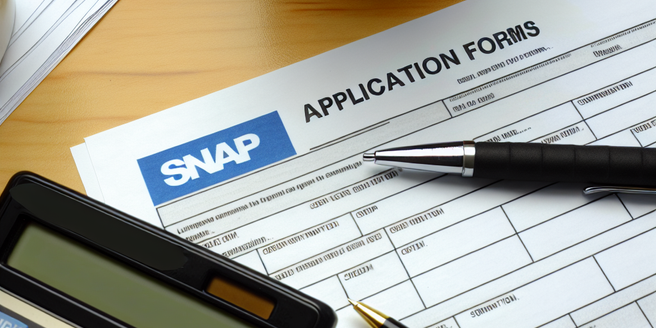Understanding the Basics of SNAP Renewal
The Supplemental Nutrition Assistance Program (SNAP) provides crucial support to millions of families and individuals. Understanding the renewal process is essential to ensure continued assistance. SNAP recipients need to undergo a renewal process periodically. The process ensures that beneficiaries still meet the eligibility criteria. Typically, states will notify recipients when it’s time to renew. This usually involves completing a renewal application, which verifies current income, household composition, and expenses. The renewal process may also include a phone interview or in-person visit to confirm the details provided. Staying informed about your renewal date and requirements can help prevent disruptions in assistance. It’s vital to submit all required documents accurately and on time. Keeping records of communications and submissions might also be beneficial in case of any discrepancies.
Eligibility Criteria for SNAP Recertification
Understanding eligibility criteria for SNAP recertification is critical for maintaining benefits. Recipients need to demonstrate continued financial need, which is primarily based on household income and size. Income limits may vary, but typically, households must have income at or below 130% of the federal poverty line. Additionally, households must possess less than a specified amount of countable resources, such as bank accounts. The program also considers other factors, including an individual’s work status, dependent expenses like childcare, and housing costs. During recertification, recipients must verify these factors and report any changes since their last certification. It’s important to note that special allowances may apply for the elderly, disabled, or those with significant medical expenses. Staying updated on state-specific guidelines ensures a smooth recertification process, minimizing the risk of benefit interruption.
Step-by-Step Guide to Renew Your SNAP Benefits
Renewing SNAP benefits involves several critical steps to ensure uninterrupted assistance. First, wait to receive a renewal notice from your local SNAP office, which indicates it’s time to renew. This notice will include instructions and a deadline. Secondly, gather necessary documentation, including proof of income, rent, utility bills, and any changes in household composition. Completing the renewal application accurately is essential; it can often be submitted online, via mail, or in person. After submission, be prepared for a possible interview, which can usually be conducted by phone or in person. During this interview, you’ll verify your information with a caseworker. Once completed, await confirmation of your renewed benefits. Ensuring all steps are completed in a timely manner will help maintain access to SNAP benefits without interruption.
Common Mistakes to Avoid During Renewal
Avoiding common mistakes during SNAP renewal can help prevent delays or interruptions in benefits. One frequent error involves missing the renewal deadline or submitting incomplete applications. Ensure you’ve received and understand the renewal notice sent by your local SNAP office, which includes vital renewal dates. Failing to report changes in household circumstances, such as changes in income, household size, or living expenses, is another common mistake that needs to be avoided. Not providing complete and accurate documentation can lead to application delays. Ensure all documents, such as proof of income, rent, and identification, are current and correctly submitted. Miscommunication during any required interviews can also lead to issues; thus, staying prepared and organized is crucial. Being proactive, organized, and detail-oriented will help make the renewal process as smooth as possible.
Required Documentation for SNAP Renewal
To successfully renew SNAP benefits, providing complete and accurate documentation is crucial. Key documents typically include proof of household income, such as pay stubs or a letter from your employer, to verify current earnings. Additionally, documentation showing housing costs, like rental agreements or utility bills, is often required. For households with children or other dependents, providing evidence of expenses such as childcare or school enrollment may be needed. You might also need identification documents, including driver’s licenses or state-issued IDs, for all household members. It’s advisable to keep copies of past submissions and any official correspondence from the SNAP office to reference required materials. Ensuring all documents are up-to-date and organized can facilitate a smoother renewal process, preventing unnecessary delays and helping you maintain uninterrupted benefits.
How to Check the Status of Your Renewal Application
After submitting your SNAP renewal application, it’s important to check its status to ensure a smooth process. Most states offer multiple ways to track your application, including online systems, which are accessible through your state’s SNAP portal using a personal account. Additionally, contacting your local SNAP office directly via phone can also provide updates. Some states offer automated phone services where you can input your case number to get status updates. Having your case number and personal information at hand can expedite these inquiries. Monitoring your mailbox and email for correspondence from the SNAP office is also essential, as any requests for additional information will typically be communicated through these channels. Regularly checking and responding promptly to any requests or notifications will help ensure your benefits are renewed without unnecessary delay.



